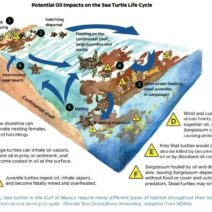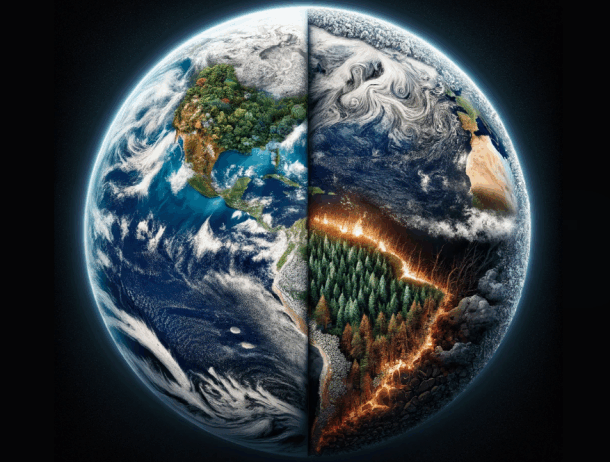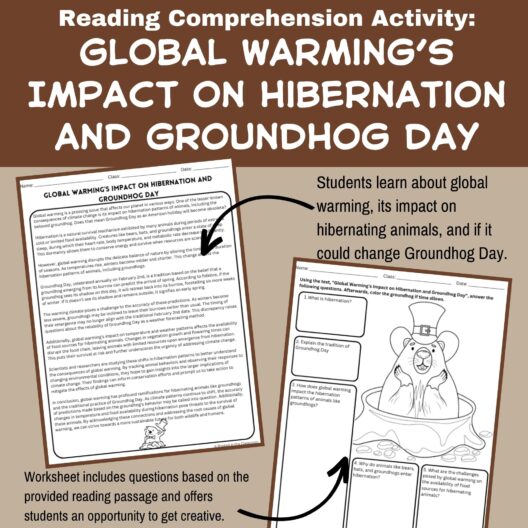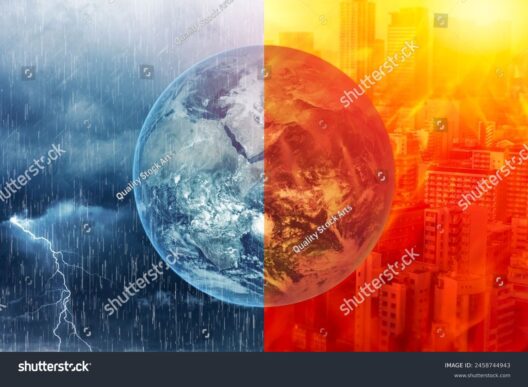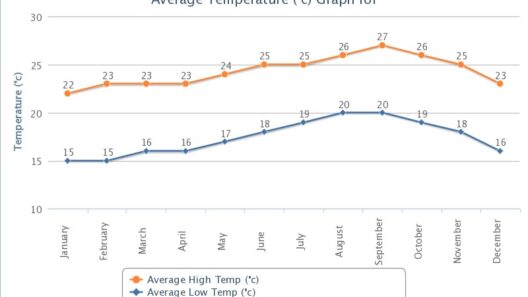Human-caused climate change, often referred to as anthropogenic climate change, represents a significant and multifaceted environmental challenge that arises from human activities, particularly the unabated release of greenhouse gases into the atmosphere. To comprehend the enormity of our impact on the Earth, one might liken the planet to a finely-tuned orchestra, in which every instrument—every element of the environment—plays a crucial note. When humans introduce discordant sounds, the harmony is disrupted, leading to an increasingly cacophonous climate.
The fundamental mechanism of climate change lies in the greenhouse effect, a natural occurrence that has been amplified by human action. When sunlight reaches the Earth, some of it is reflected back into space, while the rest is absorbed and re-radiated as infrared energy. Greenhouse gases, such as carbon dioxide (CO2), methane (CH4), and nitrous oxide (N2O), trap some of this re-radiated energy, effectively warming the planet. In moderation, this process is beneficial; it maintains temperatures conducive to life. However, human activities—particularly the burning of fossil fuels, deforestation, and industrial processes—have dramatically escalated the concentration of these gases, intensifying the greenhouse effect to alarming levels.
Fossil fuels, consisting mainly of coal, oil, and natural gas, are the bedrock of contemporary energy production. Their combustion releases vast amounts of CO2, altering atmospheric composition. In the early days of industrialization, the environment absorbed these emissions without significant adverse effects. However, as industrial activities burgeoned and urbanization accelerated, the capacity of the Earth’s systems became overwhelmed.
Deforestation adds another layer to this complex narrative. Trees naturally absorb CO2, playing a pivotal role in sequestering carbon. Yet, rampant logging for agricultural development and urban expansion has drastically reduced forest coverage. This not only releases stored carbon but reduces the planet’s capacity for future carbon absorption. It is akin to a well-intentioned gardener uprooting a vital plant in a desperate attempt to cultivate a faster-growing species, ultimately jeopardizing the entire ecosystem.
The implications of these actions extend far beyond temperature changes. With the alteration of the climate system comes a cascade of environmental repercussions. Ice sheets are retreating, sea levels are rising, and extreme weather events are becoming increasingly common. Hurricanes, droughts, and heatwaves evoke the tempest of a fan in full throttle—each mote of its spinning serves to remind us of the chaos we have unleashed. Globally, ecosystems are struggling to adapt to these rapid changes, threatening biodiversity and endangering countless species, including humans.
Furthermore, human-caused climate change is already affecting agricultural productivity. Crops that once thrived in stable climate conditions are now subject to the whims of unpredictable rainfall and shifting temperatures. This can lead to food insecurity, creating a burgeoning class of climate refugees. As environmental conditions become increasingly inhospitable, populations that have relied on specific agricultural practices for generations may be forced to abandon their homes in search of sustenance. The resultant social and political instability can stymie efforts to combat climate change and erode the social fabric of communities.
There is, however, a glimmer of hope embedded within the intricacies of this issue. The scientific community has made significant strides in understanding Climate Change’s dynamics and their broader implications. The Intergovernmental Panel on Climate Change (IPCC) provides crucial assessments that guide policymakers in crafting solutions and strategies for climate resilience. Such efforts emphasize the necessity for immediate and actionable responses to mitigate human impact.
Transitioning towards renewable energy sources is paramount. Solar, wind, and hydroelectric energy represent sustainable alternatives that can replace fossil fuel dependence. Investing in clean energy infrastructure mirrors the notion of re-tuning our orchestra, harmonizing a more sustainable relationship with our environment while reducing greenhouse gas emissions. Simultaneously, reforestation and afforestation initiatives can enhance our planet’s resilience by restoring biodiversity and improving carbon sinks. It is akin to restoring a once-majestic symphony through careful reparation.
Additionally, fostering a culture of sustainability among individuals and corporations is essential. By reevaluating consumption patterns, promoting energy efficiency, and reducing waste, society can significantly curtail its carbon footprint. A collective shift in consciousness towards ecological mindfulness allows for the nurturing of grassroots movements and policy changes that prioritize environmental health. Our everyday choices—whether to limit water use, forego single-use plastics, or support sustainable brands—have the power to orchestrate resilient community practices that coalesce on global platforms.
Moreover, education plays a pivotal role in shaping the future trajectory of climate action. By inculcating an awareness of environmental issues in younger generations, a foundation can be laid for innovative thinking and problem-solving. Schools, universities, and community organizations must cultivate a robust climate literacy, equipping individuals with the tools to advocate for comprehensive environmental policies and practices.
In conclusion, human-caused climate change is a profound realization of our impact on the Earth—one that underscores the urgency for collective action and innovative solutions. It is imperative that we acknowledge the discordance we have introduced to our planet’s symphonic balance and take steps to mitigate these consequences. Only through a harmonized effort can we hope to create a sustainable future where Earth can continue to thrive, preserving its intricate ecosystems and nurturing all forms of life. The time to act is now, for the future of our planet hinges on the decisions we make today.


